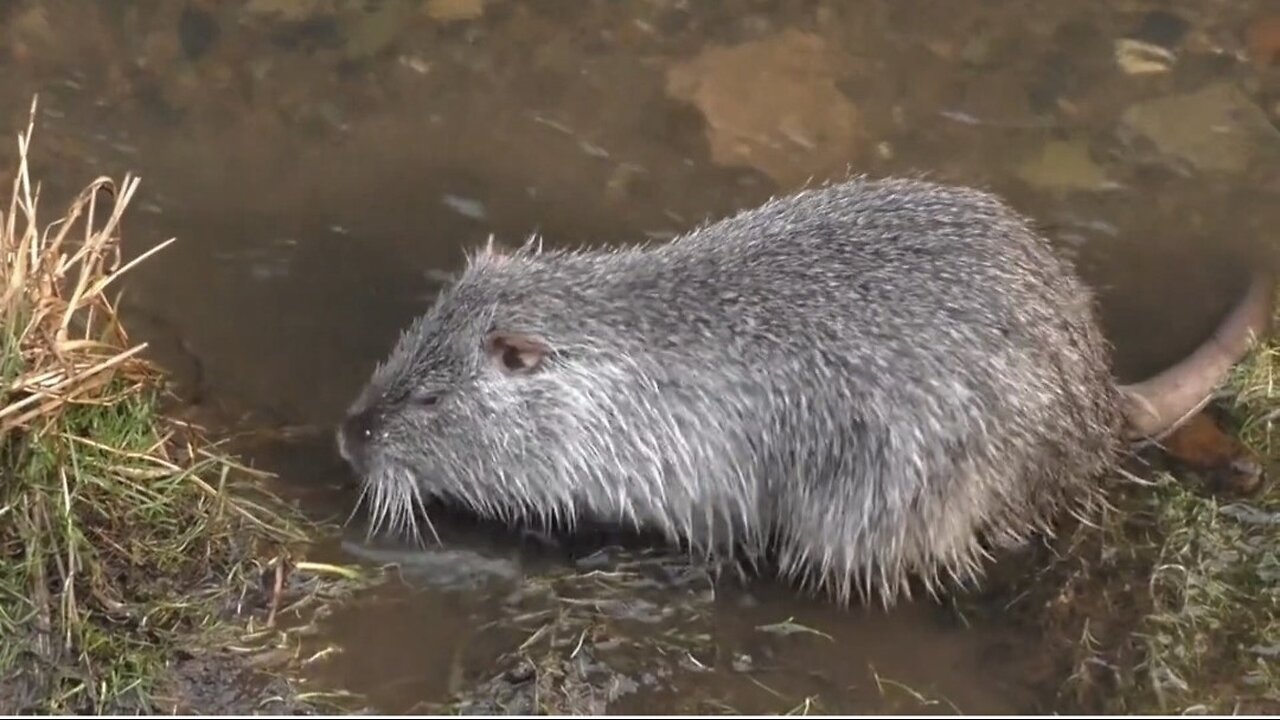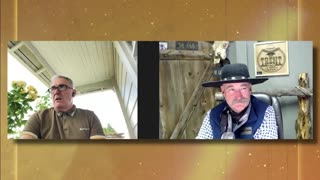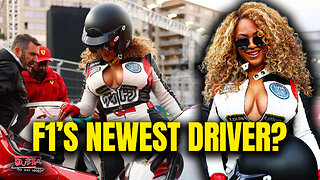Premium Only Content

"Nutria: A Closer Look at the Swamp's Unlikely Resident"
Introduce Nutria (Myocastor coypus) as a large, semi-aquatic rodent native to South America but now found in various parts of the world, including North America, Europe, and Asia.
Appearance: Describe their physical characteristics, including their elongated bodies, webbed feet, large front teeth, and distinctive, rat-like tails. Mention their fur, which is typically brown and can be quite dense.
Habitat and Distribution
Natural Habitat: Explain that Nutria thrive in wetland areas such as marshes, rivers, and lakes, where they can easily access vegetation and water.
Global Distribution: Discuss how they were introduced to regions outside their native habitat for fur farming in the early 20th century and how they have since established populations in various countries.
Diet and Behavior
Feeding Habits: Highlight that Nutria are herbivorous, primarily consuming aquatic plants, grasses, and roots. They play a role in their ecosystems by influencing plant growth and distribution.
Social Structure: Discuss their social behavior, including living in groups and their communication methods. Mention their nocturnal habits and how they build burrows or nests near water sources.
Ecological Impact
Positive Contributions: Touch on their role in wetland ecosystems, such as maintaining plant diversity and providing food for predators.
Negative Impacts: Address the potential problems they can cause, including overgrazing of vegetation, which can lead to erosion and loss of habitat for native species. Mention how they can also disrupt agricultural areas and contribute to water quality issues.
Conservation and Management
Population Control: Discuss efforts made in different regions to manage Nutria populations, including hunting and habitat management. Mention any conservation programs aimed at preserving native wetland habitats and species affected by Nutria.
Public Perception: Explore the mixed feelings about Nutria among local communities, from being viewed as pests to being appreciated for their role in ecosystems.
Conclusion
Summary: Recap the significance of Nutria in their habitats, their impact on ecosystems, and the importance of balanced management strategies.
Call to Action: Encourage viewers to learn more about wetland conservation and the role of various species in maintaining ecological balance.
Visual Elements
Footage: Use video clips showing Nutria in their natural habitats, feeding, and interacting with each other.
Graphics: Include diagrams of their habitat preferences and charts showing population trends in different regions.
Interviews: Feature insights from ecologists or wildlife experts to provide authority and depth to the discussion.
Engagement
Questions for Viewers: Pose questions at the end, such as "What are your thoughts on the impact of Nutria in your area?" or "Have you ever encountered Nutria in the wild?"
This detailed structure should help create an engaging and informative video about Nutria! If you need any specific sections expanded further, feel free to ask.
-
 11:55
11:55
Upper Echelon Gamers
12 hours ago $0.11 earnedThe Malware Disaster on STEAM
257 -
 25:35
25:35
Athlete & Artist Show
15 hours agoYOU WON'T FINISH THE GAME!
2.23K -
 13:22
13:22
Silver Dragons
17 hours agoAre You Prepared for What SILVER Will Do Next?
4.71K3 -
 9:20
9:20
Adam Does Movies
19 hours ago $0.10 earnedIT: Welcome To Derry Episode 4 Recap - What An Eyesore
2.71K1 -
 LIVE
LIVE
LIVE WITH CHRIS'WORLD
11 hours agoTHE WAKE UP CALL - 11/24/2025 - Episode 12
281 watching -
 LIVE
LIVE
BEK TV
2 days agoTrent Loos in the Morning - 11/24/2025
161 watching -
 LIVE
LIVE
The Bubba Army
2 days agoF1'S NEWEST DRIVER? - Bubba the Love Sponge® Show | 11/24/25
1,467 watching -
 19:15
19:15
Nikko Ortiz
20 hours agoOstrich Gets A Taste For Human Blood
55.2K16 -
 32:42
32:42
MetatronHistory
1 day agoWas FASCISM Left wing or Right wing?
16.5K43 -
 LIVE
LIVE
Flex011
6 hours ago $0.01 earnedFrom Scrap to Stronghold: Our Base is Live!
68 watching